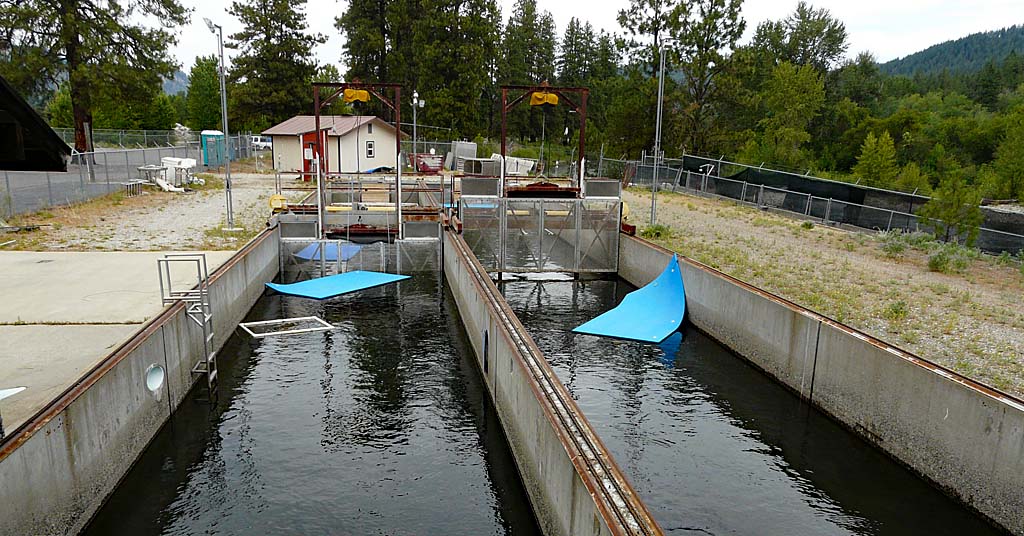Coronavirus outbreak at Oregon State Penitentiary obscured in ZIP code report released by state
Published 3:00 pm Sunday, May 24, 2020
Weekly state reports tracking coronavirus infections by ZIP code have obscured a large outbreak at the Oregon State Penitentiary.
The Oregonian/OregonLive identified the problem Tuesday. As of Friday, it was unclear if, or how, public health officials planned to address the inconsistency in future reports.
Trending
“We’re reviewing how we report adults in custody at the Oregon State Penitentiary in our weekly COVID-19 ZIP code data,” Oregon Health Authority spokesman Robb Cowie said in a statement.
At issue is the official ZIP code for the Oregon State Penitentiary in Salem and where public health officials have chosen to list associated infections.
The Oregon Department of Corrections has been publicly disclosing infections at the maximum-security prison that, as of Friday, stood at 115 inmates and 26 employees – making it the largest known outbreak in Oregon.
But those prison infections aren’t remotely distinguishable in the ZIP code data released by the Oregon Health Authority each week.
State officials for the past three weeks have been disclosing ZIP code-level data on Tuesdays, most recently with specific infection tallies for 89 ZIP codes with at least 10 infections.
In addition, the health authority has identified 112 ZIP codes with between one and nine infections and the 74 ZIP codes with zero infections.
Trending
But nowhere on the state’s list is 97310, the official ZIP code for the Oregon State Penitentiary.
Why not? And where are those infections being listed by the state health authority?
Cowie offered several shifting explanations. But at the heart of the matter is the difference between a little-known postal ZIP code and the corresponding ZIP code designations created by the U.S. Census Bureau.
The Census Bureau created ZIP Code Tabulation Areas — general geographic representations of ZIP code service areas — for its numbers gathering. But those tabulation areas don’t always include every ZIP code listed by the Postal Service – case in point, 97310.
The 97310 ZIP code is essentially a mailing designation for the prison and several other state buildings in Salem located within the 97301 ZIP code boundary used by the Census Bureau.
When the newsroom first asked whether state penitentiary infections were tracked on the ZIP code report in 97301, Cowie confirmed they were.
But when this week’s report did not show a large jump in cases, in conjunction with a spike reported by the Department of Corrections, the newsroom asked again.
Cowie then said infections at the state pen were instead being tallied internally under 97310, which doesn’t appear on the report.
Cowie explained that infections at the state pen were being lumped into a different category for reporting purposes: infections within ZIP codes with less than 1,000 residents.
The newsroom asked why the health authority would consider 97310 to have less than 1,000 residents. The state pen has about 2,000 inmates.
Cowie said state health officials use Census data, even though the Census Bureau effectively does not recognize 97310. Cowie asserted that inmates are “not counted as residents at that location for census purposes.”
But Census rules clearly state that “prisoners are counted at the facility.” Census Bureau officials, responding to comments about that long-standing practice when finalizing rules for the 2020 Census, defended that position, writing that a “usual residence” is defined as the place where a person lives and sleeps most of the time.
“Therefore, counting prisoners anywhere other than the facility would be less consistent with the concept of usual residence, since the majority of people in prisons live and sleep most of the time at the prison,” officials wrote.
It’s unclear where the Census counts residents from the all-male Oregon State Penitentiary. But they appear to be included in the surrounding 97301 ZIP Code Tabulation Area, which has an estimated population of 55,448.
Within that population, 53 percent of adult citizens are male.
The Oregon Health Authority isn’t the only government agency struggling with where to list infections tied to the Oregon State Penitentiary.
Officials in Marion County have created a ZIP code map that also lacks 97310. A county spokesman on Friday said the county’s ZIP code map does not include infections at the state penitentiary. He declined to explain why.
The Oregonian/OregonLive has been using the state’s weekly data to build a ZIP code map showing infections. The map includes locations of congregate care facilities with outbreaks, which in some places help explain what is driving high number of infections.
That’s why the newsroom wanted to understand how state public health officials were tracking inmate infections.
The Oregon Health Authority on Tuesday reported 81 infections in the 97301 ZIP code through Sunday. That was up just 12 from the previous week.
Meanwhile, the health authority reported 142 infections in the category for ZIP codes in Oregon with less than 1,000 population. That was a massive increase of 128 from the previous week.
Cowie, the state spokesman, said it was unclear Friday how public health officials are reporting infections at other prisons. According to the Department of Corrections, 33 inmates at three other prisons have been infected.
Thirty-eight prison employees have also tested positive for the coronavirus. Cowie said those results are reported by the ZIP code where an employee lives.
Mark Friesen contributed to this report.
This article was originally published by the The Oregonian/OregonLive, one of more than a dozen news organizations throughout the state sharing their coverage of the novel coronavirus outbreak to help inform Oregonians about this evolving heath issue.










